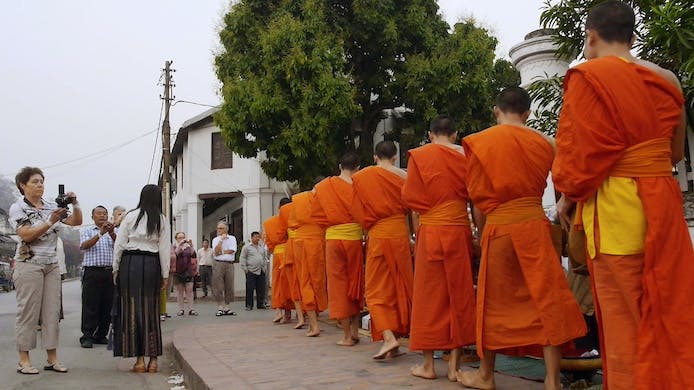Fans of Conventional Storytelling May Want To Turn the Page on ‘Fire Over Water: Films of Transcendence’
The 12 movies in the series mounted by the Metrograph shuck the niceties of plot, character, and dialogue in favor of long takes, stolid rhythms, and occluded symbolism.

“Immersive” is a word many of us have come to hold in suspicion as it has increasingly become a marker of overkill, as if the arts were somehow in need of multimedia sensationalism as a means of reaching the tired, the poor, and the huddled masses. Has the human species become so addled by the technological industrial complex that we’re unable to appreciate the qualities of a book or a painting or a movie without the attendant “interactive” foofaraw?
Alarm bells went off upon my reading the press information accompanying “Onlookers,” the new documentary by Kimi Takesue. Right out of the gate the picture is touted as immersive, being a meditation on “how we all live as observers.” The press notes underscore “the picturesque beauty of the local landscape” — in Ms. Takesue’s film, that would be the country of Laos.
How, you might wonder, is “Onlookers” more immersive than, say, “Barbie,” which is its own kind of meditation? The clue lies, I think, in “Fire Over Water: Films of Transcendence,” a series mounted by the Metrograph in which Ms. Takesue’s picture will make its U.S. theatrical debut. Centered on cinema’s ability to both prompt and embody metaphorical longings, “Fire Over Water” comprises 12 films by “cinematic explorers” like Michaël Dudok de Wit, Kim Ki-Duk, and Apichatpong Weerasethakul. Their efforts, we are told, stray from the path of conventional storytelling.
Which is another way of saying that the niceties of plot, character, and dialogue are shucked for long takes, stolid rhythms, and occluded symbolism — all of which are usually keyed to a crystalline emphasis on cinematography. Immersion, here, has more to do with quietude and cultivating distance than dynamism.
In “Onlookers,” we watch as locals set out their wares for sale or solemnly line up to provide food for a raft of Buddhist monks. The scenes shift between awe-inspiring panoramas of the natural world and the grittier precincts of the city. Our eye navigates each panorama having been prompted by a gently coercive sense of necessity set into motion by the director.

Ms. Takesue employs a stationary camera set at a polite length from her subjects. Individual shots run at least 30 seconds with no causal link between them. There’s a strong hint of the theater to the director’s machinations and, with that, a sharp eye for composition and choreography. Given how Ms. Takesue depends on chance incident — upon the wiles, say, of individuals or animals traveling in-and-around the camera’s lens — it’s impressive that there isn’t a bum shot in the movie. At moments, one is reminded of the expansive organizational facility of Pieter Brueghel.
Describing “Onlookers” as a travelogue is something of a misnomer. Although she plunks us down in the various highways and byways of Laos, Ms. Takesue doesn’t elaborate on the nation’s customs, culture, history, or economy. There is no narration. Whatever dialogue extant is picked up on the fly in conversations between, say, Western tourists backpacking their way through the country. Ambient sounds predominate — chief among them, roosters and automobiles. The sound design, courtesy of Abigail Savage and Tom Efinger, sparkles.
Who are the onlookers referenced in the title? The tourists who wend their ways through the streets of Laos, for sure. The audience, too — that is, after all, in the very nature of being an audience. But Ms. Takesue is the primary onlooker. A camera is only as objective as the person holding it.
The good citizens of Laos who wander into its purview acknowledge the filmmaker, albeit furtively, and, in a couple of cases, turn away from it. How much thematic and, perhaps, moral culpability does Ms. Takesue take on as a not-so-innocent fly on the wall? It’s to the credit of her ravishing film that we waylay our quibbles until after the final credits roll.

